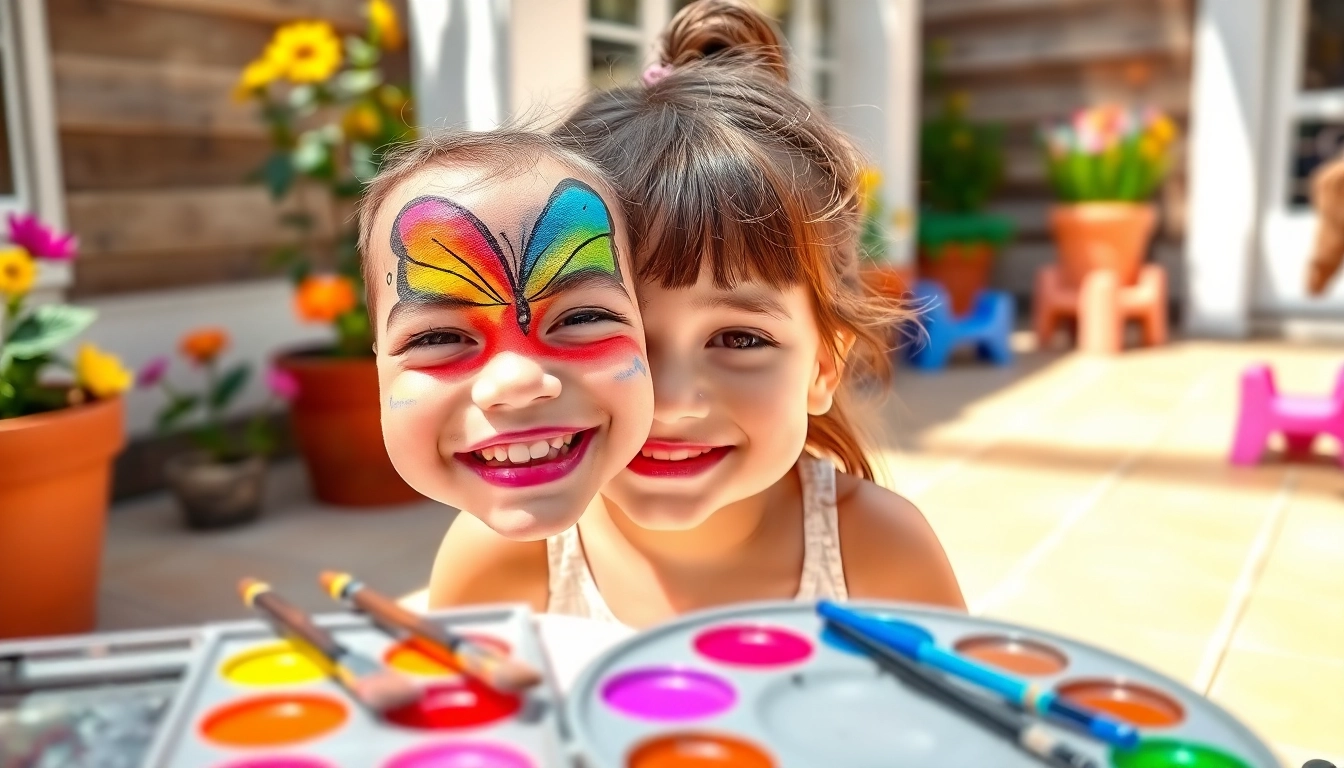Understanding Facepainting: A Beginner’s Guide
Facepainting is not just an art form; it’s a delightful experience that transcends age and culture, bringing people together in creative expression and joy. Whether at a children’s birthday party, community festival, or school event, the colorful transformation of a face through paint can spark imagination and joy. To embark on this colorful journey, understanding the basics of Facepainting is essential. This comprehensive guide will take you through its intriguing history, necessary tools, fundamental techniques, and business strategy essential for budding artists.
What is Facepainting?
Facepainting is the art of applying decorative designs to the face using specialized paints. This unique form of art is commonly employed at events to paint faces with various designs, including anything from simple patterns to intricate characters from popular culture, animals, or fantasy creatures. Facepainting not only serves the purpose of entertainment but can also be a powerful means of self-expression, allowing individuals to embody their favorite personas.
History and Evolution of Facepainting
The origins of facepainting can be traced back to ancient cultures. Throughout history, different societies have utilized face paint for various purposes, such as tribal rituals, religious ceremonies, and theatrical performances. For instance, Native American tribes would decorate their faces to represent different spirits or to intimidate enemies. Over time, facepainting evolved into a popular form of entertainment in modern societies, especially with the rise of parties and events aimed at children.
Types of Facepainting Styles
Facepainting styles vary widely, and artists often blend techniques to create distinctive looks. Common styles include:
- Fantasy designs: These include fairies, superheroes, and mythical creatures that spark a child’s imagination.
- Animal faces: Simple yet effective, animal faces like tigers, butterflies, and lions are popular requests.
- Abstract patterns: Using shapes and colors, many artists incorporate abstract designs that are eye-catching and festive.
- Themed characters: Popular culture influences many designs, including characters from movies, cartoons, and video games, creating a fun connection with audiences.
Essential Tools for Facepainting
Equipping yourself with the right tools is crucial for any aspiring facepainter. The quality of materials can directly affect the outcome of your work and the experience for the person being painted. Here’s a closer look at essential tools.
Choosing the Right Paints and Brushes
When selecting face paints, it’s vital to opt for high-quality, non-toxic paints specifically designed for use on the skin. Water-based paints are often favored for their ease of application and removal. Here are some options to consider:
- Face Paints: Products with FDA approval, such as water-based face paints or airbrush paints, offer vibrancy and safety.
- Brushes: A set of fine-tipped brushes in various sizes is essential to create detailed designs. Sponges are also beneficial for applying base colors swiftly.
Required Accessories for Beginners
In addition to paints and brushes, beginners should also invest in:
- Stencils: Stencils can simplify the creation of intricate designs, especially for those just starting.
- Water spray bottle: Keeping your paints moist during application can improve blending and color retention.
- Glitter: A dash of glitter can enhance designs, making them sparkle and appeal to kids.
- Wipes: Easy removal of any mistakes or excess paint is essential; thus, wipes are a must-have accessory.
Safety Tips for Facepainting Supplies
Safety should be a top priority. Ensure that all paints are dermatologically tested to minimize adverse reactions. Always conduct a patch test on a small area of skin before applying any product extensively. Additionally, keep your working area clean and sanitized to prevent any contamination.
Basic Techniques Every Facepainting Artist Should Know
Mastering basic techniques is crucial for any aspiring facepainter. A solid foundation will set you on the path to creativity and complexity in your designs.
Creating Simple Designs Step-by-Step
Starting with simple designs is an excellent way to build confidence and skill. Here’s a straightforward method to paint a butterfly:
- Begin by applying a light color for the base of the wings using a large brush.
- Next, use a smaller brush to add darker colors for detail on the wings.
- Complete the design by painting the body and antennas with black paint.
- Finally, add some glitter to create sparkle.
Blending and Layering Colors Effectively
Blending is key to creating depth in facepainting. To achieve smoother transitions, follow these guidelines:
- Utilize damp sponges for applying base coats to ensure even coverage.
- Practice blending two colors by layering them; use a dry brush to gently meld the colors at their borders.
- Experiment with color gradients, transitioning from light to dark shades to give a 3D effect.
Tips for Quick and Easy Facepainting
When working at large events, speed and efficiency are essential. To paint quickly:
- Focus on popular designs: Have a list of quick designs that children usually request.
- Work in teams: If possible, have someone assist with basic setups while you focus on painting.
- Employ sponges: Sponges can apply base colors faster than brushes.
Advanced Facepainting Techniques to Enhance Your Skills
Once you’ve mastered the basics, it’s time to explore advanced techniques that will elevate your artistry.
Exploring Special Effects: Glitter and Stencils
Adding special effects can make your facepainting stand out. Here are a few ways to incorporate elements like glitter and stencils:
- Using Glitter: Glitter can be sprinkled on wet paint or applied with adhesive bodies.
- Employing Stencils: Use stencils for intricate designs that are hard to achieve freehand, ensuring they are well placed to minimize mess.
Graduating to More Complex Designs
As you become comfortable with the basics, you can start challenging yourself with more intricate designs. Examples include full-face designs or thematic costumes that require creative thinking and application. Following online tutorials that break down complex designs into manageable steps can facilitate learning and improvement.
Utilizing Technology in Facepainting
Modern technology can enhance your facepainting practice. You might consider using:
- Apps for Design: Several apps allow you to explore and replicate intricate designs easily.
- Video Tutorials: Platforms like YouTube offer countless tutorials where professionals share their techniques and tips.
Starting Your Facepainting Business
For those looking to turn their facepainting hobby into a lucrative business, several strategies can aid in launching and sustaining your artistic career.
Marketing Yourself as a Facepainting Artist
Effective marketing is vital to establishing a successful facepainting business. Some effective strategies include:
- Building a Portfolio: Create a portfolio showcasing your best work to present to potential clients.
- Utilizing Social Media: Create engaging content showcasing your designs to attract an audience and potential clients.
- Networking: Attend local events or join groups where you can collaborate with other artists and share your work.
Finding Clients and Building a Portfolio
Start by offering your services at local community events, parties, and festivals. Gather testimonials from happy clients to bolster your portfolio. Additionally, consider creating an online presence to showcase your designs and share your experiences with clients.
Pricing Strategies for Facepainting Services
Pricing your services effectively is crucial. Evaluate your local market and consider factors such as:
- Complexity of Designs: Charge more for intricate designs that require additional time and skill.
- Event Duration: Consider offering packages for full-day events versus short hours.
- Materials Cost: Factor in the costs of supplies and any travel expenses to your pricing.



